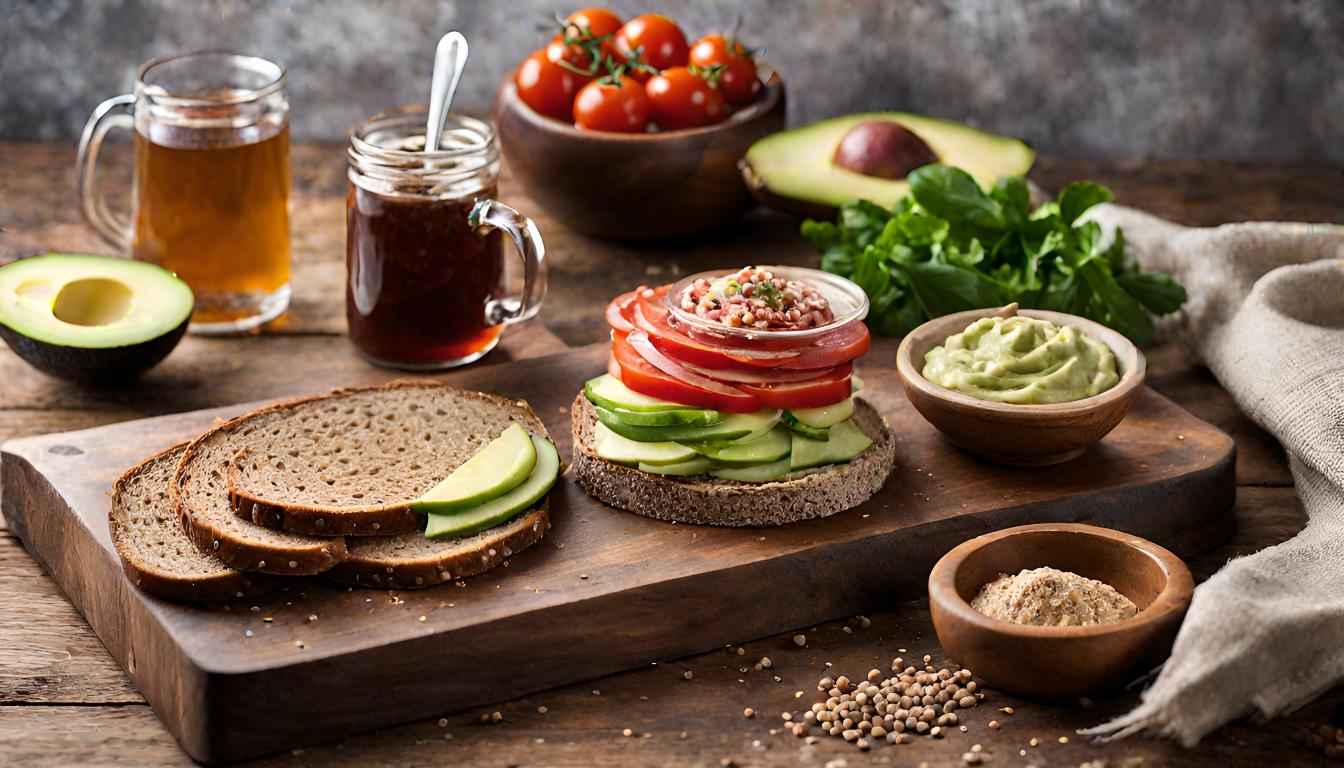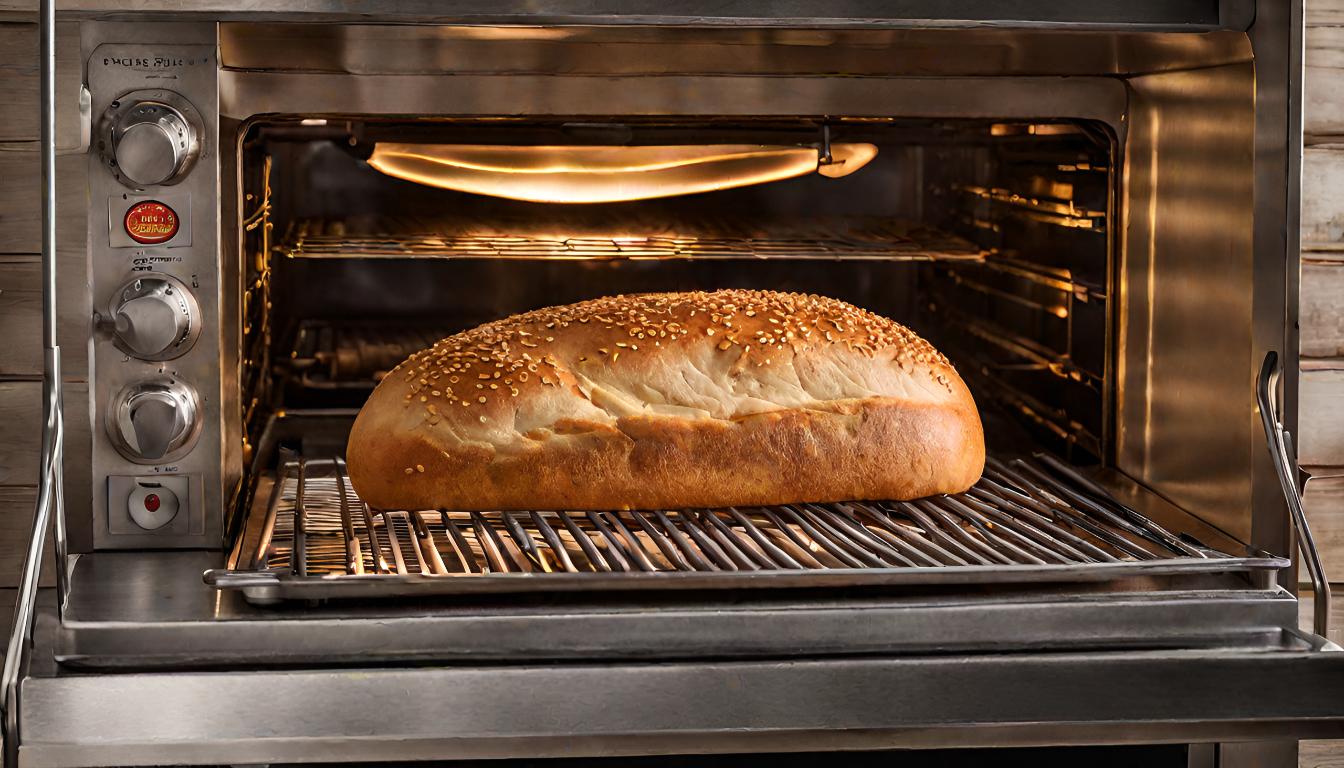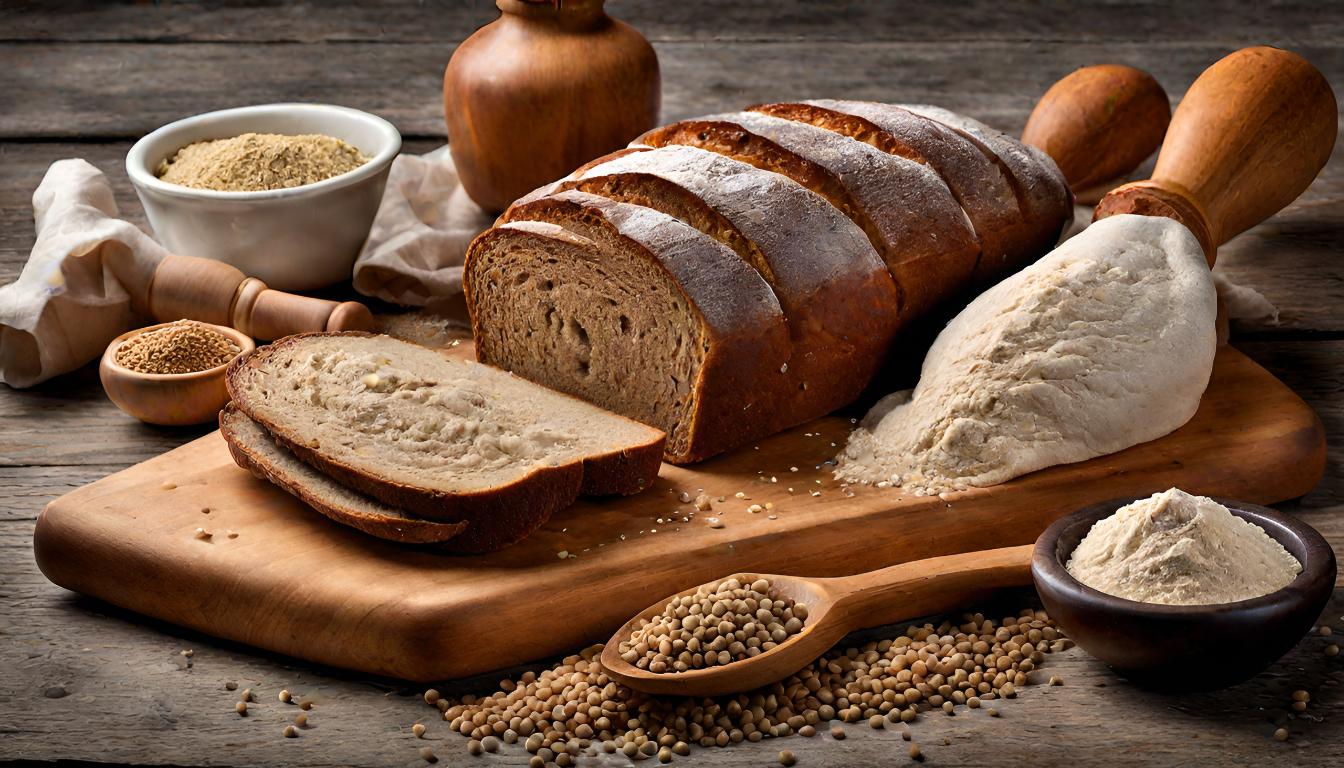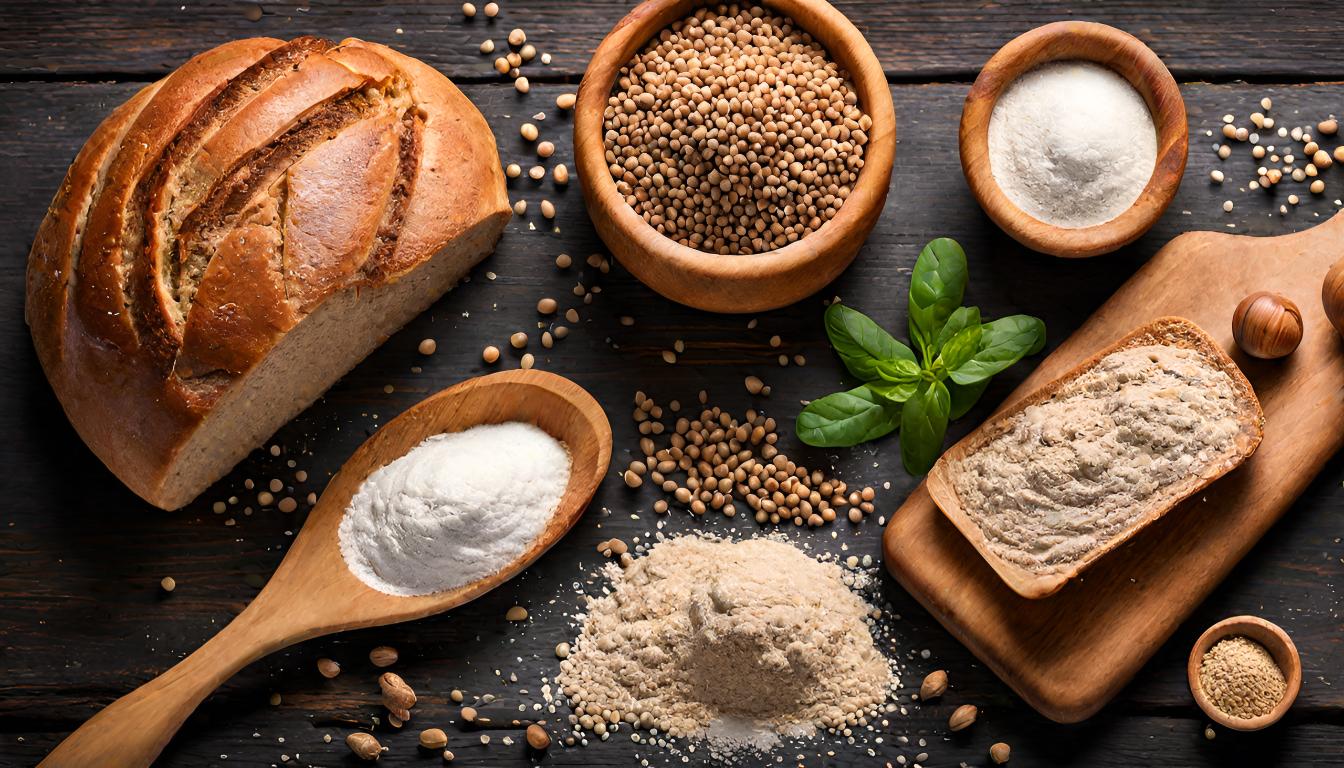Buckwheat bread, a delightful twist to traditional bread-making, is not just a treat for the taste buds but also a boon for health-conscious folks. This article dives deep into the world of buckwheat bread, unraveling its secrets from ingredients to baking techniques. Whether you’re a gluten-free enthusiast or simply eager to experiment with new recipes, this comprehensive guide promises to be your go-to resource. Let’s embark on this flavorful journey, one step at a time!
Introduction to Buckwheat Bread
What is Buckwheat Bread?
Buckwheat bread, a gluten-free marvel, is a fantastic alternative to traditional wheat-based bread. Contrary to what its name suggests, buckwheat isn’t related to wheat at all. It’s a pseudocereal, much like quinoa or amaranth, making it a perfect choice for those with gluten sensitivities or celiac disease. This bread brings a unique, nutty flavor to the table, coupled with a hearty texture that’s simply irresistible.
Benefits of Buckwheat
Buckwheat is a powerhouse of nutrition. It’s packed with essential amino acids, rich in fiber, and loaded with minerals like magnesium and iron. What’s more, it’s a great source of antioxidants, which are crucial for fighting off those pesky free radicals. Including buckwheat in your diet can contribute to better heart health and improved digestion. It’s not just about what you’re avoiding (gluten, in this case) but also about the fantastic nutrients you’re adding to your diet.

In the next section, we’ll delve into the ingredients that make buckwheat bread not just delicious but also nutritious. Stay tuned!
Whole Grains Council – “benefits of whole grains”
Ingredients and Substitutes
Choosing the Right Buckwheat Flour
Selecting the right buckwheat flour is crucial for your bread. You want a flour that’s finely ground, ensuring a smooth texture in your bread. Organic buckwheat flour is often the best choice, offering a rich, earthy flavor. Remember, the quality of your flour can make or break your bread!
Gluten-Free All-Purpose Flour and Its Alternatives
In addition to buckwheat flour, most recipes call for a gluten-free all-purpose flour. This blend usually contains a mix of rice flour, tapioca starch, and sometimes potato starch. It’s designed to mimic the properties of regular wheat flour, making your bread light and fluffy. If you’re adventurous, feel free to experiment with other gluten-free flours like almond or coconut flour. Just keep in mind, each flour brings its own unique flavor and texture to the bread.
In the upcoming section, we’ll guide you through a step-by-step recipe to create the perfect loaf of buckwheat bread. Get your baking tools ready!
Celiac Disease Foundation – “understanding gluten-free diets”
Step-by-Step Recipe Guide
Preparing the Dough
The journey to a perfect loaf of buckwheat bread begins with the dough. Start by mixing your dry ingredients – the buckwheat flour, gluten-free all-purpose flour, and a pinch of salt. If your blend doesn’t include xanthan gum, now’s the time to add it. Xanthan gum is a gluten-free baker’s best friend, helping to bind the ingredients and give the bread that desirable elasticity.
Next, introduce the wet ingredients. Warm water (or milk for a richer flavor), a touch of apple cider vinegar, and a drizzle of vegetable oil. The vinegar is a little trick to help activate the baking powder
, giving your bread that much-needed rise. If you’re using yeast, ensure your liquid is warm enough to activate it but not too hot to kill it.
Now, the fun part – mixing! Combine the wet and dry ingredients until you have a sticky, cohesive dough. Don’t be alarmed if it’s more batter-like than traditional wheat dough; that’s just the nature of gluten-free baking.
Baking and Cooling Tips
Once your dough is ready, transfer it to a greased loaf pan. Smooth the top with a wet spatula for a nice, even finish. Let the dough rest in a warm, draft-free area. This resting period is crucial – it allows the yeast or baking agents to work their magic, giving your bread a good rise.
Baking time is a delicate balance. You want a crust that’s golden and a center that’s cooked through but still moist. A general rule of thumb is to bake at a moderate temperature (around 350°F or 175°C) for about 40 to 50 minutes. But remember, all ovens are different, so keep an eye on your loaf!
The hardest part? Waiting for the bread to cool down completely before slicing. This patience pays off, as it prevents the bread from crumbling and ensures perfect slices.
Ready for the next part? We’ll explore how to enhance the texture and flavor of your buckwheat bread, making it not just a gluten-free option but a delicious choice for everyone.
Vegan Society – “vegan baking alternatives”
Texture and Flavor Enhancements
Role of Psyllium Husk and Xanthan Gum
To achieve that perfect bread texture, psyllium husk and xanthan gum are your secret weapons. Psyllium husk, a natural fiber, adds structure and a whole wheat-like texture to your bread. It’s particularly useful in gluten-free baking, where traditional gluten structure is absent. Xanthan gum, on the other hand, acts as a stabilizer and thickener, helping to bind the ingredients and give your bread that classic, chewy texture.
Adding Seeds and Nuts
For an extra flavor kick and a delightful crunch, consider adding seeds and nuts to your buckwheat bread. Sunflower seeds, pumpkin seeds, or even a handful of chopped walnuts can transform your loaf. Not only do they add a pleasant texture, but they also pack in additional nutrients, making your bread even healthier. Just sprinkle them on top of the dough before baking, or mix them directly into the batter for an evenly distributed crunch.
In the next section, we’ll dive into dietary adjustments to make buckwheat bread suitable for various dietary needs, ensuring everyone can enjoy this delicious treat. Stay tuned!
Dietary Considerations
Vegan and Egg-Free Options
Buckwheat bread can easily be adapted for vegan diets. If your recipe calls for eggs, don’t fret! There are several egg-replacers available, like flaxseed meal or chia seeds mixed with water, which not only bind the ingredients but also add a nutritional punch. Commercial egg-replacers are also an option, often made from potato and tapioca starch.
Dairy-Free Variations
For those avoiding dairy, buckwheat bread is naturally accommodating. Most recipes are dairy-free, but if milk is required, simply swap it with a plant-based alternative. Almond milk, soy milk, or oat milk can be used in equal quantities, offering subtle flavor variations and keeping the bread moist and tender.
In the upcoming section, we’ll explore the FAQs surrounding buckwheat bread, answering common queries and providing tips to ensure your baking success. Stay tuned for
these insightful tidbits that could make all the difference in your baking adventures!
In the next part, we’ll address some of the most frequently asked questions about buckwheat bread. From storage tips to troubleshooting common baking issues, we’ve got you covered. This section aims to clarify any doubts and ensure your buckwheat bread turns out perfectly every time. Stay tuned for these helpful insights!

Frequently Asked Questions
Is Buckwheat Bread Gluten-Free?
Yes, buckwheat bread is naturally gluten-free. Despite its misleading name, buckwheat is not related to wheat and is safe for those with gluten sensitivities or celiac disease. However, always ensure that your other ingredients, especially baking powders and flour blends, are certified gluten-free.
Can Buckwheat Bread Be Made Vegan?
Absolutely! Buckwheat bread can be easily adapted to a vegan diet. Use plant-based milk alternatives and egg substitutes like flax or chia eggs. Many recipes are inherently vegan, making them a great option for those following a plant-based lifestyle.
How to Store and Freeze Buckwheat Bread?
To keep your buckwheat bread fresh, store it in an airtight container at room temperature for up to 3 days. For longer storage, wrap the bread in plastic wrap and freeze it. It can be frozen for up to 3 months. Thaw overnight in the refrigerator before serving.
Can I Substitute Buckwheat Flour with Other Flours?
While buckwheat flour is key for this recipe, you can experiment with other gluten-free flours. Millet, amaranth, or quinoa flours can be used in a 1:1 ratio. However, each flour will bring its unique taste and texture to the bread.
Is Buckwheat Bread Suitable for a Low-Carb Diet?
Buckwheat bread is lower in carbs compared to traditional wheat bread but may not be suitable for strict low-carb diets. For those on a low-carb regimen, consider adjusting the recipe by incorporating almond or coconut flour, which are lower in carbohydrates.
Tips for Achieving the Perfect Texture in Buckwheat Bread
For that perfect texture, ensure your dough has the right consistency – it should be sticky and more batter-like. Allow sufficient rising time in a warm environment, and don’t rush the baking process. Cooling the bread completely before slicing is crucial for the perfect texture.
In the next section, we’ll share some creative ways to serve buckwheat bread, turning it from a simple loaf into a culinary delight. Whether you’re looking for breakfast ideas or something to complement your dinner, we’ve got some tasty suggestions coming up!

Serving Suggestions
Breakfast Ideas
Buckwheat bread can transform your breakfast into a nutritious and delicious meal. Try it toasted with a spread of avocado and a sprinkle of sea salt for a simple yet satisfying start to your day. Or, for a sweeter option, top it with almond butter and banana slices. Its nutty flavor also pairs wonderfully with classic toppings like scrambled eggs or smoked salmon.
Lunch and Dinner Pairings
For lunch or dinner, buckwheat bread is incredibly versatile. Use it as the base for an open-faced sandwich, layering it with hummus, fresh veggies, and sprouts for a healthy and filling meal. It also makes a great side to soups and salads, adding a hearty element to lighter dishes. For a twist, try using buckwheat bread for homemade croutons, adding a delightful crunch to your salads or soups.
In the next part, we’ll wrap up our comprehensive guide to buckwheat bread. We’ll revisit the key points and leave you with some final thoughts on this wholesome, delicious bread. Stay tuned for our conclusion, where we bring together all the elements of making and enjoying buckwheat bread.
Conclusion
Wrapping up our journey into the world of buckwheat bread recipe , we’ve explored everything from the basics of what makes this bread so unique to the intricate details of baking it to perfection. We’ve seen how buckwheat, a humble yet powerful ingredient, can transform the simple act of bread-making into a nutritious endeavor.
From selecting the right flour to understanding the role of various ingredients in achieving the perfect texture and flavor, we’ve covered the essentials that every baker, novice or experienced, should know. We’ve also delved into how this bread can be adapted to various dietary needs, ensuring that everyone can enjoy its wholesome goodness.
The versatility of buckwheat bread in meals throughout the day – from a hearty breakfast to a satisfying dinner – highlights its universal appeal. Whether you’re looking for a gluten-free option or simply want to try something new in your baking repertoire, buckwheat bread is a fantastic choice.
Remember, baking is as much an art as it is a science. Each loaf you bake is an opportunity to refine your skills and add your personal touch. So, embrace the process, enjoy the aromas that fill your kitchen, and most importantly, savor each bite of your homemade buckwheat bread recipe.
Happy baking!








Comments are closed.